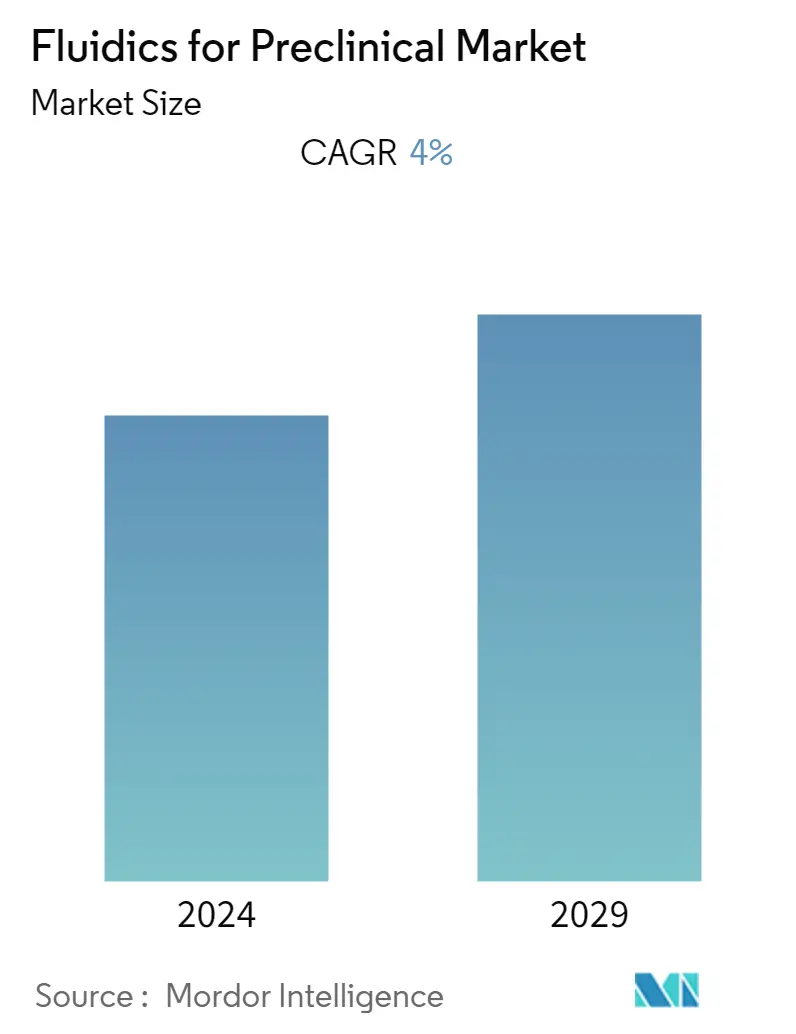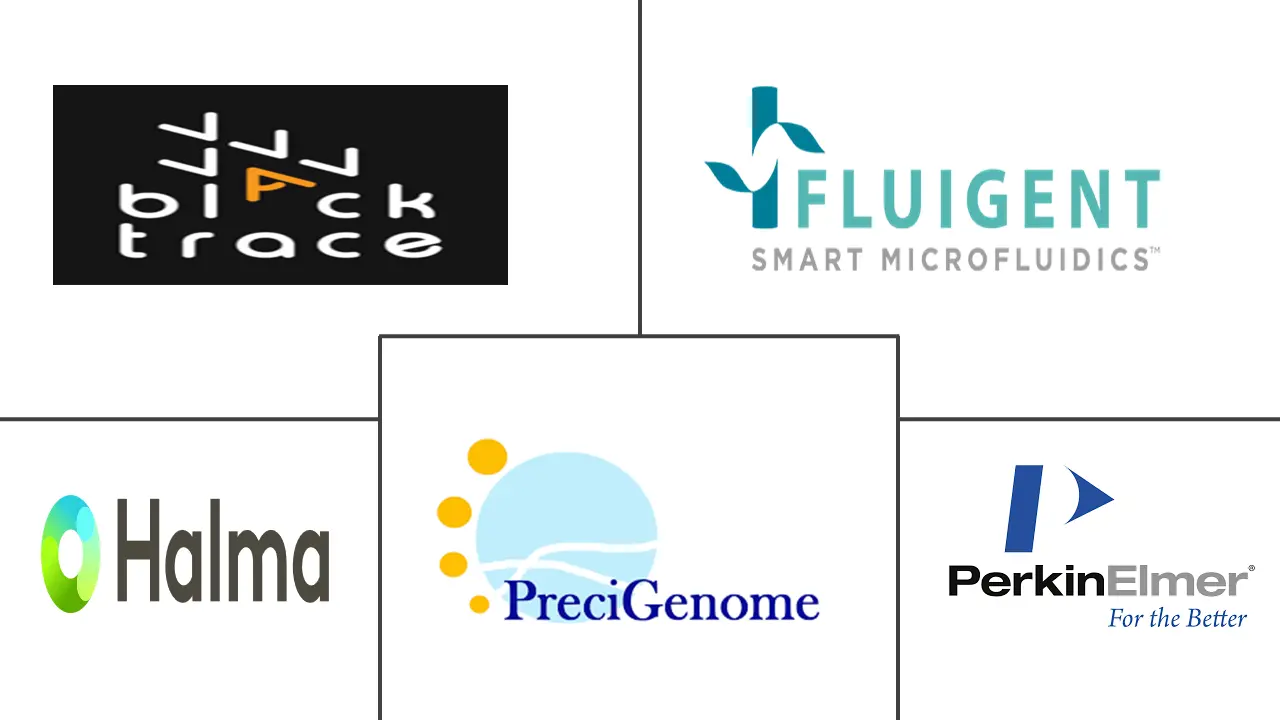Market Size of Fluidics for Preclinical Industry

| Study Period | 2019 - 2029 |
| Base Year For Estimation | 2023 |
| CAGR | 4.00 % |
| Fastest Growing Market | Asia Pacific |
| Largest Market | North America |
| Market Concentration | Medium |
Major Players
*Disclaimer: Major Players sorted in no particular order |
Need a report that reflects how COVID-19 has impacted this market and its growth?
Fluidics for Preclinical Market Analysis
The fluidics for the preclinical market is expected to register a CAGR of 4% over the forecast period.
COVID-19 has impacted market growth owing to the lockdown measures imposed by the government, leading to the disruption of preclinical research, which has impacted the market growth during the initial phase of the pandemic. In early 2020, with increasing COVID-19 cases, companies focused on conducting preclinical research to develop mRNA-based vaccines against coronavirus, which has increased the demand for fluidics for preclinical. For instance, according to an article published in the Life Journal in May 2022, it has been observed that SARS-CoV-2 antibodies were detected using a variety of methods, including the microfluidic DA-D4 (double-antigen bridging immunoassay technique), which finds total antibodies, including all subclasses and isotypes, and sandwich/competitive immune-sensors based approaches, and enable the analysis of three samples per device. Also, as per the same source, the semi-automated microfluidic platform with the traditional multilayer soft-lithography technology can detect antibodies against four SARS-CoV-2 antigens while processing 50 samples in a single device. Thus, the high utilization of fluidics techniques for detecting coronavirus increased the market growth during the pandemic. Moreover, with the increasing number of drug development processes, the studied market is anticipated to grow over the forecast period.
Factors such as the growing preclinical research and the increasing incidences of chronic diseases are expected to boost market growth over the forecast period.
The rising burden of chronic diseases such as cancer, diabetes, cardiovascular diseases, and others increases the demand for point-of-care testing and novel drugs, which is expected to propel the demand for fluidics for the preclinical market over the forecast period. For instance, according to the 2022 statistics published by IDF, about 537 million people were living with diabetes in 2021, which is projected to reach 643 million and 784 million by 2030 and 2045, respectively. This is anticipated to increase the demand for testing using microfluidic chips and small samples of blood, hence boosting the market's growth.
Additionally, as per 2022 statistics published by Dementia Australia, 401,300 Australians were living with dementia in Australia in 2022, and this number is projected to reach about 849,300 million (533,800 women and 315,500 men) by 2058. Thus, the increasing burden of dementia among the target population raises the need for effective drug discovery, screening methods, and toxicology studies. This increases the demand for fluidics systems or software that can be used to grow neurites, glial cells, endothelial cells, and skeletal muscle cells, along with the maintenance of fluid isolation, and provides an opportunity to investigate organogenesis and disease etiology.
Furthermore, the increasing facility and investment for preclinical research studies are also contributing to the market growth. For instance, in October 2022, the Minister for Municipal Administration and Urban Development, Industries and Commerce, and Information Technology, India, inaugurated the state-of-the-art facility of the GV Safety Assessment Platform (GVSAP), preclinical services vertical of GV Research Platform (GVRP) involved in commercial breeding of Specific Pathogen Free (SPF) research models and preclinical testing in Hyderabad. Also, in April 2022, The National Growth Fund in the Netherlands invested EUR 325 million (USD 345 million) to accelerate the preclinical development process of cancer drugs. With this investment, Oncode-PACT will develop valuable drug candidates faster and cheaper, which is anticipated to augment the market growth over the forecast period.
Therefore, owing to the aforementioned factors, such as the high burden of diabetes and dementia among the population and the increasing investment in preclinical research, the studied market is anticipated to grow over the forecast period. However, the stringent regulatory framework is likely to hinder the growth of the fluidics for the preclinical market over the forecast period.
